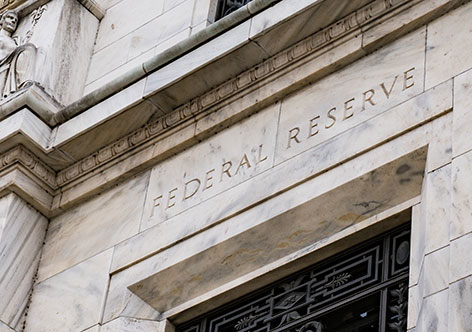Key highlights
- Views over whether inflation is transitory or gaining pace with economic re-openings
- Growing concerns that the Fed is behind the curve in handling US inflation
- Discomfort may boil down to most investors never experiencing higher rates environment
If there is a dominant narrative percolating in the markets in recent weeks, it’s that of US inflation – and what will be its impact on investor sentiments, be it short or for the longer term.
Concerns have picked up pace earlier in the month when the US Consumer Price Index (CPI) which measures a basket of goods and services including energy and housing costs for April spiked by 4.2% from a year earlier, the fastest annual rate increase since 2009, with the month-to-month number also rising by 0.8%, against the expected 0.2%.
The increase was much bigger than economists expected. It was also well above the US Federal Reserve’s (Fed) target of 2% – which investors feared if sustained will lead to the US central bank eventually raising interest rates sooner than expected to cool an overheating economy.
The hotter-than-expected inflation data spooked investors, causing US stocks to fall sharply that day (12 May) with massive selloffs in technology shares. That is because techs are seen to be more vulnerable to inflationary pressures as their valuations as well as other high-growth companies are often tied to their earning potential further into the future. Inflation can impact future earnings as well as the borrowing costs for capital spending needed to keep expanding their growth trajectories.
While it may still be argued that it will be some time before the Fed resort to hiking interest rates – some say it may be two years down the road – it can lower the heat by other means within its monetary policy toolkit. These would include taking steps to reduce its monthly bond purchases (currently at a rate of $120 billion per month) or adjusting the amount and tenure of the US treasury bonds issued.
Such measures will determine the supply of money or liquidity within the US and indirectly the global financial system.
Market angst
Or in short, the market’s angst was largely over the liquidity – which is the main driver behind the continuous upward momentum ever since the remarkable market rebound from a record plunge since the second quarter of 2020 following the onset of the global pandemic that led subsequently to widespread curbs in economic activities across the globe due to virus lockdowns.
However, thanks to the unprecedented progress on the vaccine front with the first approvals last November and progressive vaccination rollouts since then, economies have largely been reopening with macroeconomic data reviving at better-than-expected growth rates, particularly on the supply side such as in manufacturing output.
Consumer spending though still has some catching up to do as pandemic-sensitive sectors such as leisure, travel and energy have yet to recover to pre-pandemic levels – which poses another source of worries in that the more than $2 trillion from US Covid relief stimulus cheques will send prices rising once American consumers unleash their pent-up demand.
New normal
The Fed had repeatedly said on numerous occasions that it views early signs of post-pandemic inflation as “transitory” that can be traced to several factors.
For one, there is the matter of distortion from the base-effect for April as prices a year ago for the same month were highly crushed by economic shutdowns which sent commodity prices plummeting and even pushed oil prices in the US briefly below zero.
Then there were also a host of bottlenecks issues as it seems easier to shut than to reopen businesses. For instance, supply chains that were disrupted by pandemic shutdowns had to be rebuilt. Inventories that were cut back had to be replenished, which can run into unexpected challenges.
That was what precisely happened to global automakers when the semiconductor chips needed for new cars were short in supply. This development had largely stemmed from the fact that the supply-demand balance has shifted drastically as a large portion of the chips had been re-directed to IT equipment due to more prevalent work-from-home (WFH) arrangements by businesses as well as increasing use of e-commerce applications in response to spikes in household online shopping and school home-based learning.
As for the April spike itself – it was driven by idiosyncratic developments from the post-pandemic reboot of the US economy which included a 10% bump-up in used car prices which when you come to think of it was due to Americans resuming travel including to work and in new jobs in new locations as well as the short supply of computer chips creating a shortage of new cars.
As the Nobel prize economist, Paul Krugman had argued: there will be “an unusual set of bottlenecks in a weird recovery” and that “price changes over the next few months will probably be bloated by temporary factors” that conventional yardsticks don’t normally account for in core inflation.
As to the problems of labour shortages and hence the spectre of rising wages, other economists in the same camp have attributed them to shifts in the US workforce such as those who have undergone retraining or are less willing to return to the service sectors such as restaurants or malls due to the fact they may have to deal with hostile customers who are yet or unwilling to be vaccinated. Then, there is also the matter of women who are hesitant to return to the labour force until US schools and childcare centres are ready to reopen.
There is also a longer-term view that ageing demographics, technological innovation including automation and robotics will also play a part to rein inflation in the longer run, as well as the commodity supercycle may not materialise if China’s demand for raw materials fall short of projections.
Fed sceptics
Notwithstanding such benign views, there are those in the other camp who are not as sanguine. They point to the rapid run-up in prices of commodities such as copper, iron ore, nickel and aluminium as well as housing lumber which has cause US home prices to rise strongly amid increasing demand due to an admixture of factors ranging from low interest rates and increased liquidity to a desire to move to less populated areas after experiences with pandemic lockdowns.
Prolonged bouts of inflation, they fear will hamper the post-pandemic recovery and force the Fed and other central banks to tighten monetary supply with consequences to the performance of equities and other risk assets.
The Fed’s determination to stay the course, they argued, may see longer term inflation pick up even further which will necessitate sharper rate rises and the need to act more aggressively down the road if the inflationary pressures keep up. That would in turn also hurt debt-laden emerging market economies as other central banks join the fray.
In previous financial crises, the modus operandi of the Fed and other central banks tend to be one of acting swiftly to head off climbing consumer prices by raising interest rates at the merest signs of a return to the inflation of the 1970s.
Fed chair Jerome Powell has decidedly taken an opposite tack, opting instead in a drastic shift last August to impose a new under the Average Inflation Targeting (AIT) framework that will explicitly tolerate longer periods of higher inflation (above 2%) with the view that premature tightening had delayed the pace of previous economic recoveries, such as in the aftermath of the subprime crisis in 2007-08.
That view aligns with that of the Biden Administration under US Treasury Secretary Janet Yellen to “go big” on government spending in areas such as infrastructure and climate projects that will propel US GDP growth above those under previous administrations.
Some economic watchers have pointed to the fact that the jitters in the market may have stemmed from the fact that there is an entirely new generation of investors who has yet to experience an environment of rising inflation and are unsure what may unfold from a paradigm shift in interest rates. Hence, their discomfort with the definition of what is “transitory” as well as the new mode in policymaking and worries that the Fed will be wrongfooted by its complacency.
That said, the Fed had hinted in its April meeting minutes that it could reconsider its easy monetary policies if the US economy continues to show signs of rapid improvement, which may allay some of the market concerns.
Portfolio adjustment in response to inflation
Whether inflation is “transitory” or crying wolf every time prices bounce, the underlying currents in the markets remain largely positive though gains looking forward are unlikely to match the spectacular advances in previous months even with economic recovery in an upcycle.
Investors will just have to be more selective and nimbler, both strategically and tactically in their portfolio adjustments – broadening the range of risks assets in their baskets for better diversification which may include:
- Cyclical stocks which have lagged growth stocks tend to perform better in times of higher inflation. These would include energy, materials and industrial sectors that tend to perform well in times of higher inflation.
- Materials producers such as manufacturers of chemicals, industrial gases, pulp, lithium that benefit from economic upcycles.
- Precious metals like gold, silver and mining stocks can shine in a highly inflationary environment (also a hedge against geopolitical risks).
- High dividend equities, being short duration assets, would perform well as the economic recovery continues to broaden out alongside rising bond yields.
- Shorter-duration high yield corporate credit is preferred over government bonds, as the income component would help offset the drag from the duration component.
- ESG related equities and bonds such as those in renewable energy for the long term due to growing interest and awareness in sustainable investing and support from government initiatives.
- Private market assets such as real estate that generate income with low correlation to equities would be attractive as well.
- Collectables especially art, wine and stamps are also known as a reliable store of value in inflationary times with real returns for art (7%), wine (5%) and stamps (9%).
This publication shall not be copied or disseminated, or relied upon by any person for whatever purpose. The information herein is given on a general basis without obligation and is strictly for information only. This publication is not an offer, solicitation, recommendation or advice to buy or sell any investment product, including any collective investment schemes or shares of companies mentioned within. Although every reasonable care has been taken to ensure the accuracy and objectivity of the information contained in this publication, UOB Asset Management Ltd ("UOBAM") and its employees shall not be held liable for any error, inaccuracy and/or omission, howsoever caused, or for any decision or action taken based on views expressed or information in this publication. The information contained in this publication, including any data, projections and underlying assumptions are based upon certain assumptions, management forecasts and analysis of information available and reflects prevailing conditions and our views as of the date of this publication, all of which are subject to change at any time without notice. Please note that the graphs, charts, formulae or other devices set out or referred to in this document cannot, in and of itself, be used to determine and will not assist any person in deciding which investment product to buy or sell, or when to buy or sell an investment product. UOBAM does not warrant the accuracy, adequacy, timeliness or completeness of the information herein for any particular purpose, and expressly disclaims liability for any error, inaccuracy or omission. Any opinion, projection and other forward-looking statement regarding future events or performance of, including but not limited to, countries, markets or companies is not necessarily indicative of, and may differ from actual events or results. Nothing in this publication constitutes accounting, legal, regulatory, tax or other advice. The information herein has no regard to the specific objectives, financial situation and particular needs of any specific person. You may wish to seek advice from a professional or an independent financial adviser about the issues discussed herein or before investing in any investment or insurance product. Should you choose not to seek such advice, you should consider carefully whether the investment or insurance product in question is suitable for you.





